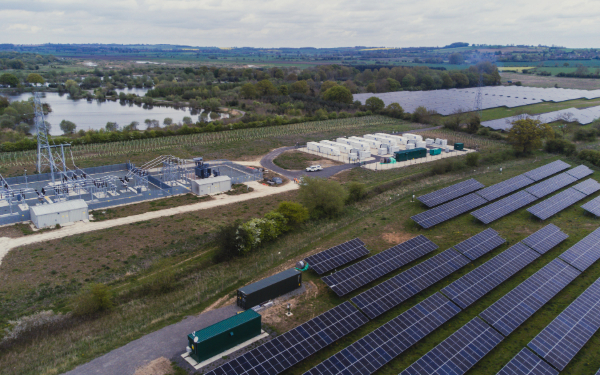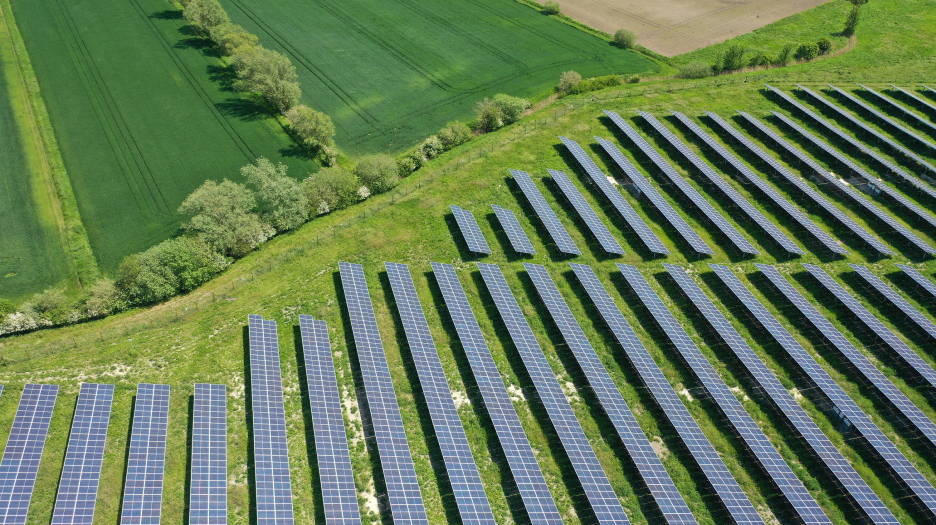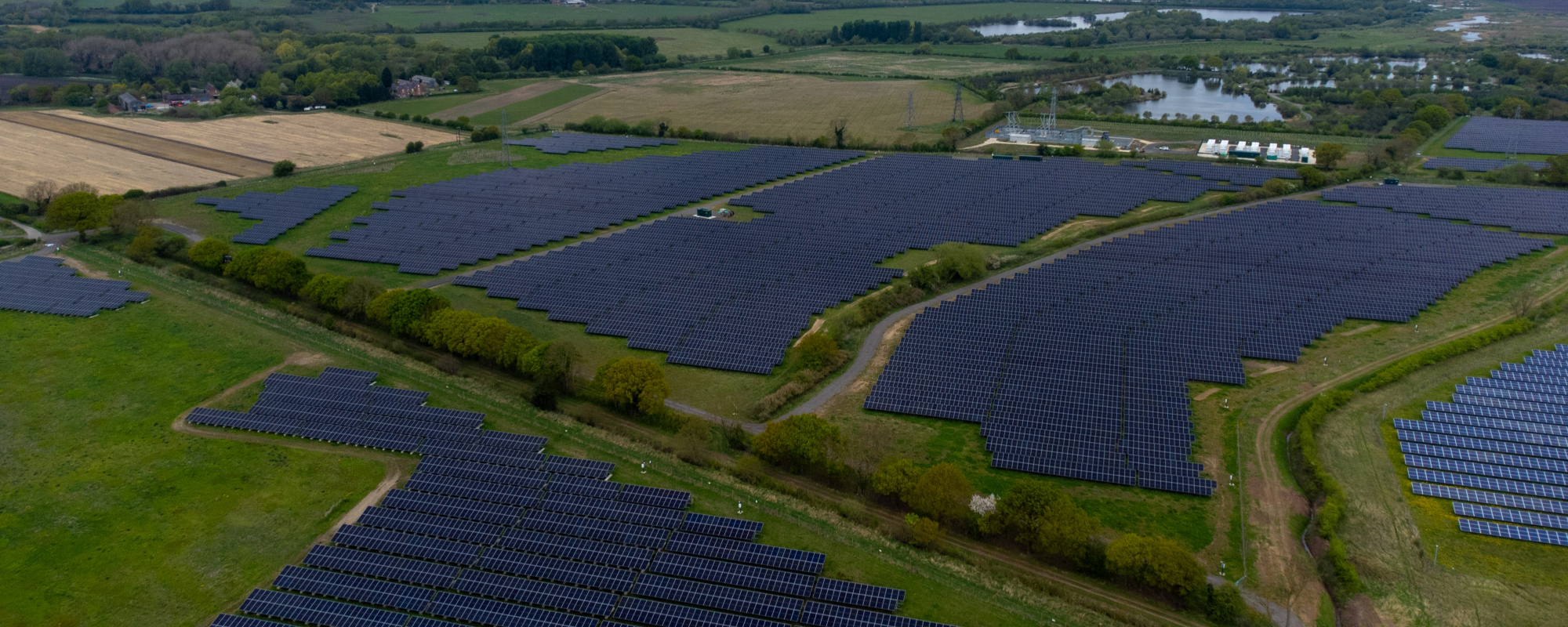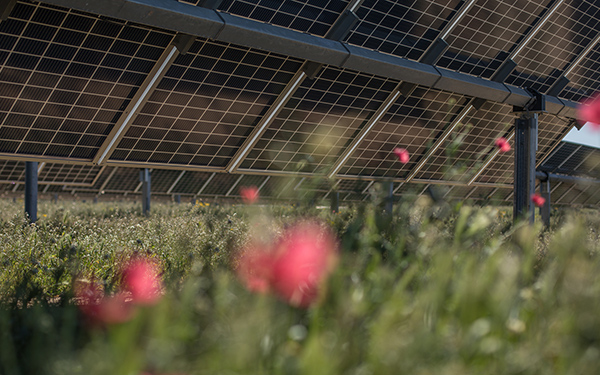The emerging corporate renewable procurement models
Hybrid PPAs, multi-buyer agreements, and innovative self-consumption solutions open new pathways for companies needing tailored renewable supplies.

Why are Hybrid PPAs considered a strategic advantage?
Decarbonization, security of supply, and price certainty remain the three core considerations when companies contract energy supplies.
Power Purchase Agreements (PPAs) have evolved from tactical hedges into core strategic instruments and hybrid PPAs (combining solar, wind, and storage) are emerging as one of the effective ways to secure low carbon power that is more reliable and offering a less volatile price.
At Lightsource bp (+55GW current global development pipeline, 11.9GW developed, and 5.3GW under management), we’re building a pipeline of solar, wind and storage projects designed to deliver the energy supplies that support corporate buyers’ requirements.
We believe that suppliers able to orchestrate multiple assets to deliver low carbon products that are closer to off-takers consumption loads will increasingly have an edge.
What defines a PPA as “hybrid”?
A hybrid PPA contractually bundles two or more renewable technologies, most often solar and wind, but increasingly including battery storage.
The assets can be co-located on a shared grid connection or aggregated as a virtual hybrid under one commercial structure.
Complementarity matters. Solar tends to peak at midday and in the summer, while wind can perform better at night, in the early morning, in the evening, or in winter.
Combining the two reduces intraday and seasonal volatility. Adding batteries bridges some of the residual gaps by shifting energy from surplus to deficit hours and also provides grid services such as frequency response and peak shaving.
What are the key benefits of Hybrid PPAs?
- A more predictable cost: By blending complementary resources and storage, corporates can cover a larger share of their load with contracted renewables, shrinking residual exposure to spot markets and imbalance charges. PPAs are, at their core, long term price hedges. Hybrid structures improve the hedge’s quality by aligning delivery with consumption patterns, which stabilizes the realized cost of electricity over time.
- Grid friendliness and faster penetration of renewables: Co-locating batteries alongside solar and wind generation allows a better use of grid connection capacity — storing power when the grid is congested and delivering it when needed. This reduces curtailment/wasted energy, delays or avoids expensive network upgrades, and helps get more renewable energy online faster, especially in markets where grid connections are hard to secure.
- Hourly ESG claims and impact: Across Europe, the shift towards hourly matching of Guarantees of Origin (GOs) is gaining momentum. Hybrid PPAs boost the share of energy consumed that is truly renewable and traceable on an hourly basis.
- More value generation: Hybrid assets can blend contracted PPA revenues, with merchant upside. They can provide off takers with firmer volumes and price certainty, and developers/investors with residual flexibility that can possibly be monetised, provided that contract terms and dispatch rights are structured thoughtfully to maximise value for all.

Southern Europe’s momentum: Spain, Portugal, and Italy
Although hybridisation is also gaining momentum in Northern Europe (in countries such as the Netherlands, the Nordics, or Germany), we expect to see Spain, Portugal and Italy lead the way in the coming few years.
These Southern countries combine exceptional solar and robust wind resources, supportive policy signals, and a growing industrial demand (including new data centres and the electrification of heat and processes). As importantly, hybridisation will help these markets address the impact of cannibalisation, congestion, and maximise grid connections.

Making hybrid PPAs bankable: contracting options that work
Hybrid PPAs are more complex than single technology deals, but well-designed structures create bankable, long-term agreements:
- Virtual hybrid PPAs: Aggregate output from separate wind, solar, and storage assets into a portfolio level offtake with single settlement. They are especially relevant where colocation is challenging.
- 24/7 time-matched PPAs: PPAs aiming to green each hour of the buyer’s consumption profile are increasingly sought after by hyper-scalers, green hydrogen producers, and some energy intensive industries. Delivering these contracts demands advanced forecasting, active trading, and seamless asset coordination — and the right partner to make it happen.
- Defined dispatch and revenue sharing : Contracts clarify who controls storage dispatch, how revenues from arbitrage and ancillary services are shared, and how curtailment is managed to protect the off-taker’s firm profile.
Corporate PPAs can accelerate renewable build out by derisking projects and improving access to finance, these effects can be amplified when the contracted asset is hybrid and delivers a more stable output.

Beyond the single buyer: multi-buyer aggregation
Multibuyer (aggregated) PPAs enable several companies, often with different load shapes and credit profiles, to procure from one or more projects under harmonized frameworks. This unlocks scale, spreads transaction costs, and lowers barriers for first time or midsized buyers. The European market is seeing smaller, more tailored deals and hybrid structures as buyers optimize fit for purpose risk allocation.
A flagship example is The Fashion Pact collective virtual PPA, an industry first multibuyer structure with 12 global brands linked to Lightsource bp’s Spanish solar portfolio, demonstrating how aggregation can accelerate access to renewables for companies with modest individual loads.
Hybrid self-consumption in Spain: an emerging complement
Alongside offsite PPAs, behind the meter and near site self-consumption has expanded under Spain’s regulatory framework, most notably Royal Decree 244/2019, which enabled individual and collective self-consumption, simplified procedures, and introduced surplus compensation for smaller installations. For large energy users, these provisions support hybrid onsite solutions and campus style consumption models that can pair with offsite PPAs to cover residual load.
Structuring combined self-consumption + PPAs can accelerate renewable deployment, reduce exposure to grid bottlenecks, and maximize the use of existing connections. (For specifics on site matching and feasibility, our team can assess options within your footprint and local network conditions).
Conclusion and Lightsource bp’s role
At Lightsource bp, we’ve been vocal about the role of PPAs, especially hybrids, as a price hedge and credible decarbonization tool. In 2024, we have secured 10 PPAs totalling 1.3 GW across Europe, the Americas, and APAC, underscoring our ability to tailor, structure, and deliver bankable contracts at scale.
As energy markets evolve, so must corporate procurement strategies. Hybrid PPAs, multi-buyer agreements, and innovative self-consumption solutions open new pathways for companies striving for smarter, more resilient, and tailored renewable sourcing. The maturation of battery storage technologies and the growth of time based decarbonization all point in the same direction: hybrid is moving from “innovative” to inevitable.
At Lightsource bp we have pioneered innovative procurement models and are committed to partnering with corporate energy buyers worldwide to continue innovating, executing, and delivering sustainable energy solutions that create long term value.
If you’re ready to rethink your energy procurement, our team can help you assess your load needs, structure the right hybrid mix, and navigate contracting to reach first power with confidence.
Meet our Power Marketing team at RE-Source 2025 in Amsterdam.

Cyril Perez, Head of Origination, Power Markets EMEA


Partner with us
Lightsource bp provides utilities, businesses, and governments opportunities to procure renewable power with no up-front capital investment. Our responsibly developed, utility-scale projects are accessed through tailored power contracts, providing future pricing predictability.




